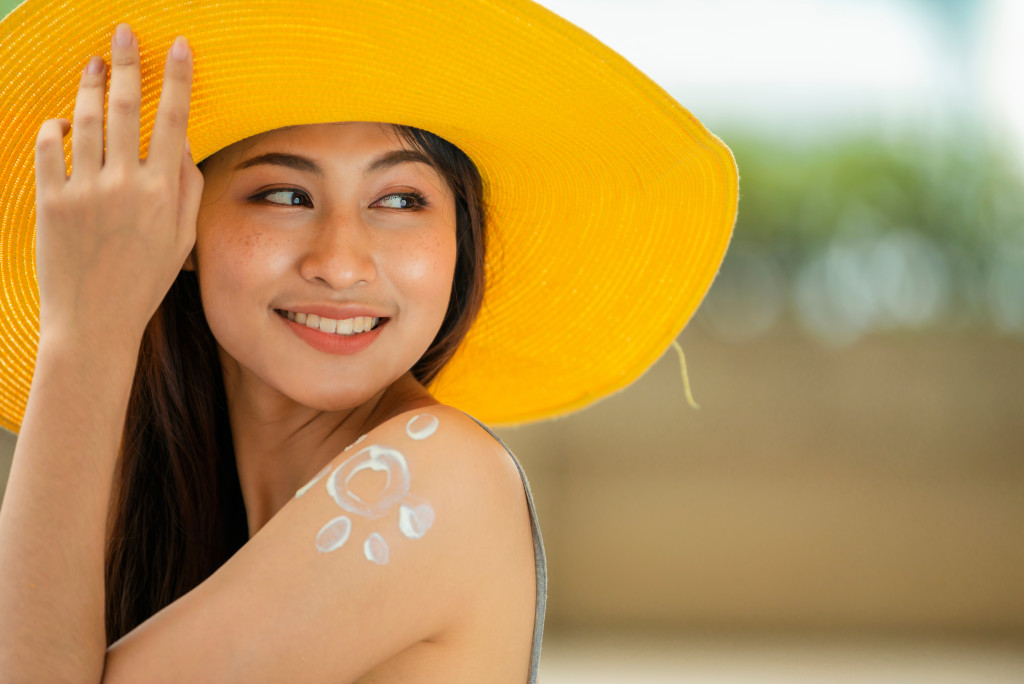Skin cancer and melanoma rates in Utah are some of the highest in the nation. Elevation and clear skies play a big part, and the fair skin tone of most residents makes them more vulnerable to sun damage. Aside from cancer and melanomas, the sun is also the leading cause of visible skin aging.
Ultraviolet radiation penetrates the skin and changes it at the molecular level, altering DNA and disrupting the chemical and hormonal balance of the skin. Utahns are more vulnerable to the sun than the usual Americans, and more stringent protective measures are required to stay safe from the sun.
Grow Trees
You might feel safe at home, but most of your sun exposure probably happens there. Big glass windows and doors let sunlight in, and along with it comes ultraviolet (UV) radiation. Urban centers have high-rise buildings that provide shade, but more suburban cities like Cottonwood Heights or Woods Cross need more natural options. Shade trees like oak, maple, and tulip trees can provide significant shade and protection.
Properly planted along the southwest corner of the house, shade trees can provide cover from the afternoon sun, especially during the summer. Growing a tree in the right place might take years, but you can transplant existing trees or buy grown ones for instant shade. Ask an arborist such as Green Pointe Tree Care to check on your tree and do a bit of maintenance, and you can have a natural shade for the decades to come.
Prevent UV From Entering Your Home
UV radiation can discolor quartz and granite in just 2-3 months. Imagine what it can do to your body after years of constant exposure. Most homes are built to take advantage of natural light, but that same light can be dangerous. Heavy shades can block UV, but they also block sunlight. UV-filtering film is a better option. It blocks 99 percent of UV while allowing sunlight to pass through. You don’t need to worry about changing the appearance of your house or making it look darker, as UV film can be as clear or as tinted as you want. UV film also blocks 60-80 percent of the sun’s heat, so expect a drop in your electricity bills.

Wear Protective Clothing
Sunblock is great, but you probably won’t remember to re-apply it every couple of hours. Long-sleeved shirts and pants can keep you protected the entire time you’re out in the sun. A hat should keep your face and neck protected, preventing the sun from artificially aging your skin. A simple cap won’t do as well as wide-brimmed hats. Dress like a cowboy with a ten-gallon hat everywhere you go, like Hugh Jackman.
The Wolverine actor had numerous bouts of melanoma, and he now wears a hat every time he goes out. You can also go for the supermodel look with an oversized sun hat. Just make sure your sun hat completely blocks light as tiny openings can let in radiation. Bring an umbrella if the UV index is particularly high. Walk with your favorite friend or coworker, and you’ll be providing shade for both of you.
Time Your Trips
Schedule your trips outside early in the morning or late in the afternoon. Going out when the sun is at its peak exposes you to high levels of UV radiation, so make sure to apply sunscreen if you can’t reschedule. Go to the gym, grocery, or shopping mall after 7. You’ll avoid most of the rush as well as the sun’s rays.
Shield Your Car
A big part of your chronic UV exposure happens during your daily commute. 15-30 minutes of driving every day expose you to significant amounts of UV radiation, and the damage accumulates. Most Utahns develop melanomas on the left side of the body, the side exposed to sunlight when driving. Several studies in the UK had similar — if reversed — results.
Studies found most UK drivers developed melanomas on the right side of their bodies, the same side exposed to sunlight. Your car’s windshield has built-in UV protection, so the right side of your body is relatively safe. You can extend the protection to your entire car with a trip to a car shop. Most shops have UV film available, and it only takes a couple of hours to have your car tinted.
UV concentrations can go up by 8-10 percent for every 1,000 feet above sea level. Utah’s elevation of 4,000 feet and more exposes its residents to at least 32 percent higher concentrations of UV — up to 70 percent more in Park City. UV protection is essential in staying safe from skin cancer and melanomas, as well as avoiding the skin-aging effects of the sun.